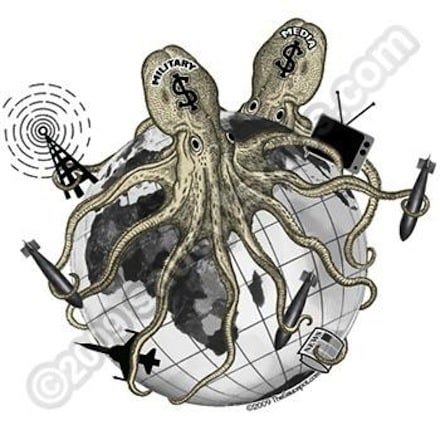
If Congress has its way, funding for the Department of Defense and related work on nuclear weapons at the Department of Energy will reach more than $850 billion in Fiscal Year 2023, far higher than spending at the height of the Cold War or the peak years of the Korean and Vietnam conflicts. While advocates of spending these enormous sums often argue that the money is needed to “support the troops,” more than half of the Pentagon’s yearly budget goes to private contractors, many of whom are making hefty profits at taxpayer expense while producing flawed products at exorbitant prices. One telling example of how these companies waste taxpayer dollars is how much they pay their top executives.
In 2021, the most recent year for which full figures are available, the top five weapons makers – Lockheed Martin, Boeing, Raytheon, General Dynamics, and Northrop Grumman – received over $116 billion in Pentagon contracts while paying their top two dozen executives a total of $287 million, according to data from the Pentagon and company proxy statements. The CEOs of the top five contractors received compensation ranging from $18 million to $23 million each, including James Taiclet of Lockheed Martin, $18.1 million; David Calhoun of Boeing, $21.1 million; Gregory Hayes of Raytheon, $21.8 million; Phebe Novakovic of General Dynamics, $23.5 million; and Kathy Warden of Northrop Grumman, $19.9 million.
Since these firms receive a large share of their revenue from US government contracts, much of this excessive executive compensation is essentially subsidized by the taxpayers. The figure for dependency on government contracts range from roughly half for Boeing (49%) and Raytheon (48%) to roughly three-quarters or more for Lockheed Martin (71%), General Dynamics (70%), and Northrop Grumman (85%). Huge CEO compensation does nothing to advance the defense of the United States and everything to enrich a small number of individuals.
It is useful to put the $287 million the top five contractors pay their top executives in some perspective. In the national security arena, average arms industry CEO pay of $21 million is 95 times the $221,000 that an active duty general makes, and 463 times the $45,000 in pay and allowances made by a beginning enlistee in the armed forces.
As expected, CEO pay at the Top Five also far exceeds the median pay of their own employees. At Lockheed Martin the ratio of CEO compensation to median worker salary is 164 to 1, compared to 169 to 1 at Boeing, 208 to 1 at Raytheon, 254 to 1 at General Dynamics, and 166 to 1 at Northrop Grumman.
Another way to understand the size of CEO compensation at the big contractors is to look at how many jobs would be created if that $287 million were spent on something else. The answer is that spending that money on productive activities would create thousands of jobs: 2,812 jobs in clean energy or infrastructure; 4,104 jobs in health care; and 4,362 in education, calculated using data on the jobs impact of government spending generated by Heidi Peltier for the Brown Costs of War Project.
A large portion of the compensation package of most arms industry executives comes from stock options. Therefore, they have a personal incentive to try to boost company share prices, by whatever means necessary. Doing so by improving company performance is one thing, but that is not the only method employed. As Sen. Elizabeth Warren (D-MA) has noted, rather than investing in research, plant, equipment, or employee compensation during a period of high cash flow and ample profits, top weapons making firms have spent tens of billions of dollars buying back their own shares. This boosts stock prices, but does not result in better equipment for members of the armed forces or spur innovation in the development of future systems. It is a questionable practice that underscores the fact that too often in the defense sector, self-interest trumps the national interest.
Read the whole article here.

